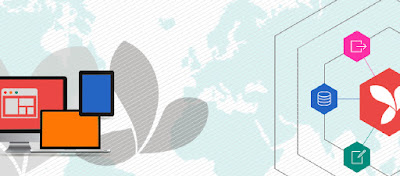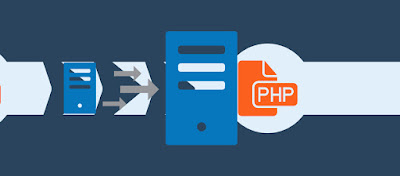A
framework can be massively productive for any developer who intends to
build compliant, structured and efficient web apps in minimal time. In
today’s time, as developers, we have a plethora of diverse frameworks
regardless of the language we are programming in. The YII framework,
however, is by far one of the most result-oriented, secure web
frameworks to depend upon. It is designed for and by PHP to provide
better developer experience through its features and better user
experience through its end product.
Agreed, it may not be the one of the popular PHP frameworks for web development,
it is surely one of the most promising open-source web app development
frameworks. Below are some prominent advantages and disadvantages that
come with YII, they are worth having a glance at.
Pros:
The open source YII is undoubtedly the fastest framework for building
Web2.0 applications (large scale). It renders a highly optimized
performance, and can seamlessly be employed by developers for designing
any kind of web applications. The generic web programming framework
makes web development an enriched, intuitive experience (using PHP), and
is perfectly suitable for large scale web applications - including
e-commerce projects, forums, web portals, content management systems,
RESTful services, and more.
The MVC architecture of Yii helps the PHP web developers in crafting
technically a smart web application. It helps in keeping the database
server isolated from the view state of the application making it cleaner
and effective. The Controller of the frameworks helps in managing
different packages and libraries of the frameworks efficiently so that,
the code pressure will decrease from the developer. It makes the whole
system work as an object where a little tweak on the codebase will
modify the entire system simultaneously. Any modification, addition,
alters or deletion will be performed in a single line code and it will
be visible throughout the application. At the same time, it provides a
systematic approach to handle any application building process.
Integrated with a Model-View-Controller structure, YII provides a horde
of security features to ensure the highest degree of security to your
application. Security plays the most important role in today’s world;
because, more number of websites are dealing with sensitive informations
like user data, their transaction history and also their personal
credentials etc. So it must be given maximum priority in any web
application. Fortunately, Yii comes with security features such as
Cross-site Request Forgery Prevention, Cross-site Scripting Prevention
and Cookie Attack Prevention. Since it is very significant for web
developers to ensure thorough security for their app development, the
framework comes embedded with authentication support, and authorization
through hierarchical role-based access control. There is client side and
server side validation as well, which developers can enable or disable
as per their project requirements.
The framework stands distinguished for its ability to function smoothly
with third party codes. Users can seamlessly use code from their Zend
or Pear framework in their Yes It Is (YII’s extended form) framework.
This is like an ice on the cake; because this helps in increasing the
potential of any web solution in an efficient yet professional manner.
Imagine, a web application having the power of both Zend and Yii or of
both Laravel and Yii!! They can definitely stand ahead among their peers
and can contribute more to the PHP developer.
Web developers also admire its clean, elegant caching support, and
component-based architecture. For a developer, YII’s philosophy that
code should be simple, and be written in the sophisticated manner works
great. With caching, a smart web developer can build highly optimized
web applications on the fly. In fact, considering a recent scenario
where most of the web traffic are coming from smart devices; it becomes
essential for every web developer to consider their website as a cross
platform compatible one. Again, since their web app will render over
smart phones, so they must be optimized enough so as to render similar
user experience in all these memory intensive devices and platforms and
fortunately Yii takes care of this wisely.
It also offers ActiveRecord for relational as well as NoSQL databases,
not to forget the query builders feature that YII provides. The tool
further highlights its some of the most efficient caching features -
letting users store cached data in different media. YII paves the way
with an extremely solid yet seamless caching system, and lends support
to XCache, memcache, ABC, and DB based page.
YII framework is supremely easy to customize or check over, owing to
its simple code structure. This enables developers to use varied widgets
and extensions depending upon their web project requirements. At the
same time, it is thoroughly object oriented - making it an ideal choice
for anyone who is versed in object oriented web programming.
The framework provides web developers with neat Ajax helpers,
particularly with Grid view, and CRUD generator using Gii. Its Bootstrap
extension support simplifies the whole process of creating responsive
applications while integrated support for I18N allows users to have
localized versions of their applications.
Another significant advantage that YII has over most other programming
frameworks is its large community support. The framework is supported
and looked after by an extremely efficient team of professionals that
consistently contribute to YII’s growth and development. The community
pegs away at constantly integrating new features and advanced practices
into the core framework - helping it evolve into a more sophisticated,
performance oriented web application framework.
Cons:
As a framework, YII does not come flooded with too many minuses.
However, there is a portion of developers that steer clear of using YII
as a framework for their web programming needs. To begin with, YII
reveals kind of an over-reliance on static methods (a part of web
developers community may not be comfortable with it).
It is believed that YII demands extreme attention while one works with
their application, for their code can quickly become bloated if proper
care is not taken.
The framework further has a somewhat steep learning curve, making it operose for new web developers to use or get started with.
Our word
Yes,
YII framework does come with a few disadvantages, however, it is
extremely powerful as a tool for developing a layered, structured web
design. Some amazing attributes such as security, extensibility, theme
organization, error handling, and integration with other frameworks make
YII a great choice for web app development. We would highly recommend
it!
Mindfire Solutions provides expert offshore PHP development services
from India, gaining its expertise from years of experience in PHP web
development and PHP application development. We have been working in PHP
for the last 8+ years and have gained expertise on various PHP application development frameworks and PHP services.






